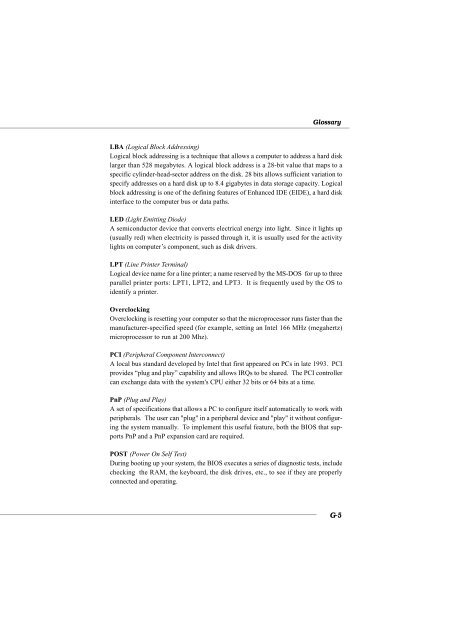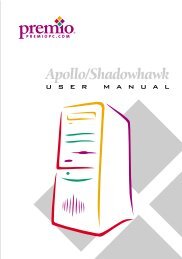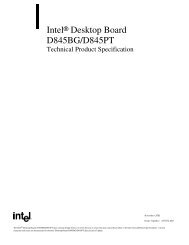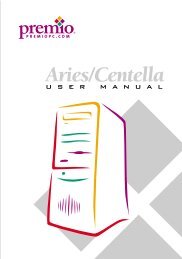E7505 Master-LS2 (MS-9121 v1.X) - Premio, Inc.
E7505 Master-LS2 (MS-9121 v1.X) - Premio, Inc.
E7505 Master-LS2 (MS-9121 v1.X) - Premio, Inc.
You also want an ePaper? Increase the reach of your titles
YUMPU automatically turns print PDFs into web optimized ePapers that Google loves.
Glossary<br />
LBA (Logical Block Addressing)<br />
Logical block addressing is a technique that allows a computer to address a hard disk<br />
larger than 528 megabytes. A logical block address is a 28-bit value that maps to a<br />
specific cylinder-head-sector address on the disk. 28 bits allows sufficient variation to<br />
specify addresses on a hard disk up to 8.4 gigabytes in data storage capacity. Logical<br />
block addressing is one of the defining features of Enhanced IDE (EIDE), a hard disk<br />
interface to the computer bus or data paths.<br />
LED (Light Emitting Diode)<br />
A semiconductor device that converts electrical energy into light. Since it lights up<br />
(usually red) when electricity is passed through it, it is usually used for the activity<br />
lights on computer’s component, such as disk drivers.<br />
LPT (Line Printer Terminal)<br />
Logical device name for a line printer; a name reserved by the <strong>MS</strong>-DOS for up to three<br />
parallel printer ports: LPT1, LPT2, and LPT3. It is frequently used by the OS to<br />
identify a printer.<br />
Overclocking<br />
Overclocking is resetting your computer so that the microprocessor runs faster than the<br />
manufacturer-specified speed (for example, setting an Intel 166 MHz (megahertz)<br />
microprocessor to run at 200 Mhz).<br />
PCI (Peripheral Component Interconnect)<br />
A local bus standard developed by Intel that first appeared on PCs in late 1993. PCI<br />
provides “plug and play” capability and allows IRQs to be shared. The PCI controller<br />
can exchange data with the system's CPU either 32 bits or 64 bits at a time.<br />
PnP (Plug and Play)<br />
A set of specifications that allows a PC to configure itself automatically to work with<br />
peripherals. The user can "plug" in a peripheral device and "play" it without configuring<br />
the system manually. To implement this useful feature, both the BIOS that supports<br />
PnP and a PnP expansion card are required.<br />
POST (Power On Self Test)<br />
During booting up your system, the BIOS executes a series of diagnostic tests, include<br />
checking the RAM, the keyboard, the disk drives, etc., to see if they are properly<br />
connected and operating.<br />
G-5
















